Abstract
The `weekly returns' system for the reporting of infectious and communicable diseases to the Birmingham Research Unit of the Royal College of General Practitioners is described. A detailed analysis of the influenza returns for the winter epidemic of 1975/76 is presented and compared with similar data from the previous ten-year period.
This analysis allows the following generalizations to be made which can, to a limited extent, be used as broad guidelines for predictions.
In any week in which a rate of 20 or more reports per 100,000 population is followed by a week in which there is a trebling of the rate, a major epidemic is imminent in which a peak rate of 500 cases per 100,000 population can be expected within three to four weeks.
In any week other than a week referred to previously in which a rate of 30 cases or more per 100,000 population is followed by a doubling of the rate, a moderate epidemic is imminent and peak rates in the range 150 to 500 per 100,000 population will be reached within three to four weeks.
The earlier in the critical period just before and just after Christmas that either of these changes are noted, the earlier and larger the peak is likely to be. Where neither of these thresholds is crossed, the peak rate for reported influenza is unlikely to exceed 150 cases per 100,000 people.
Full text
PDF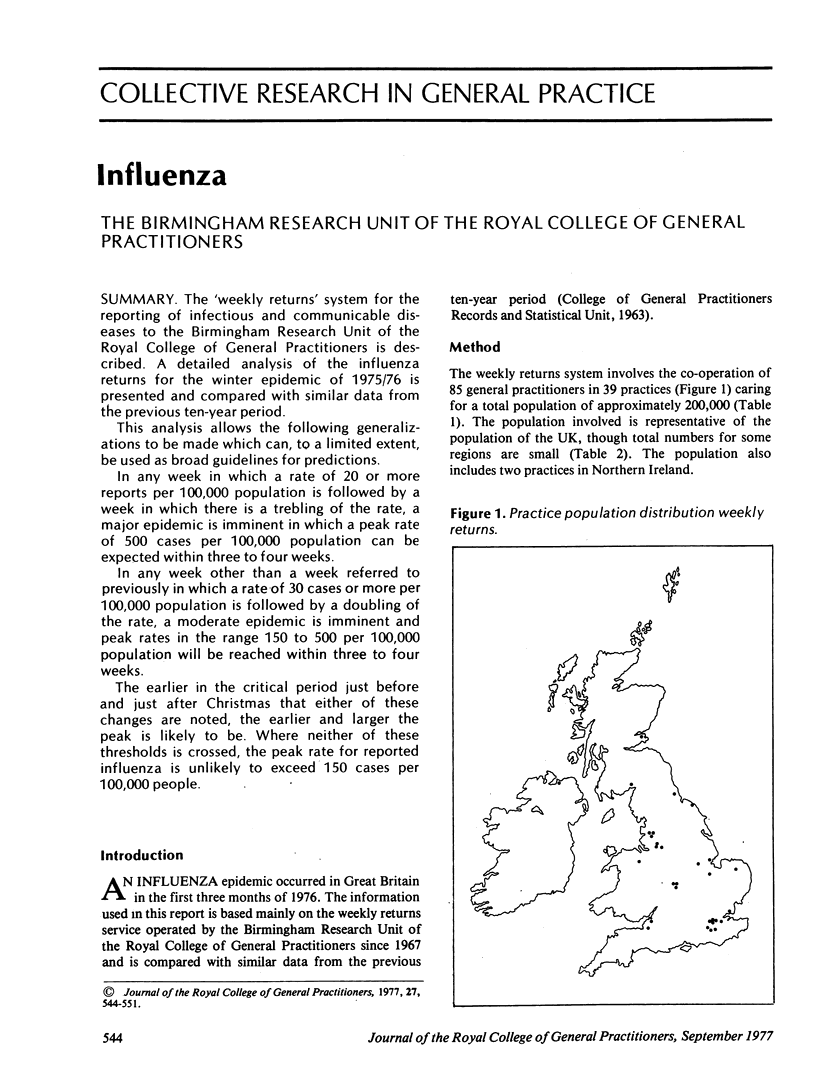
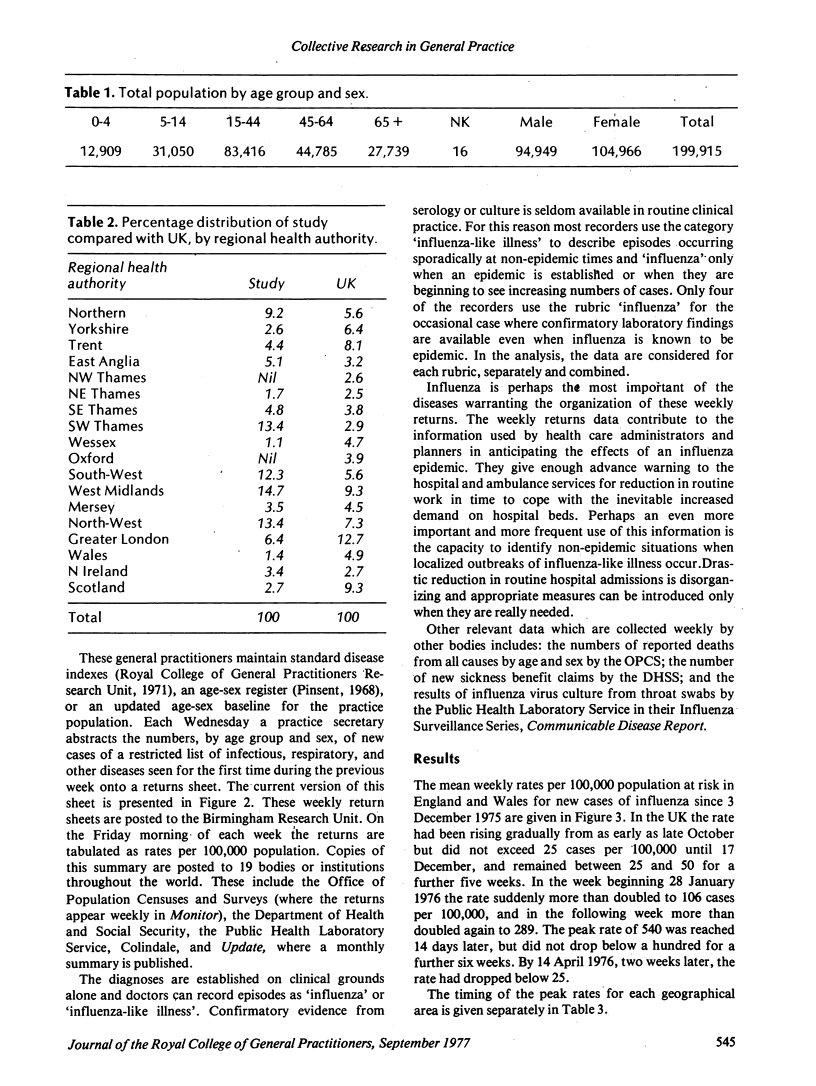
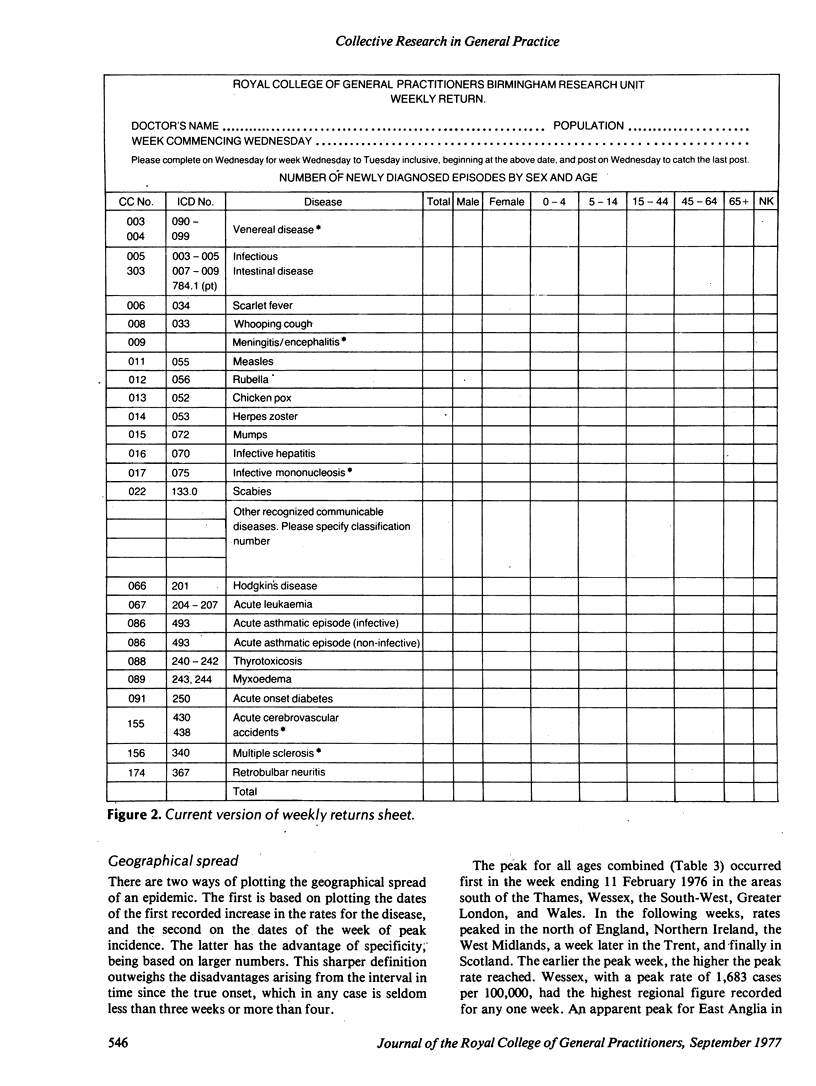

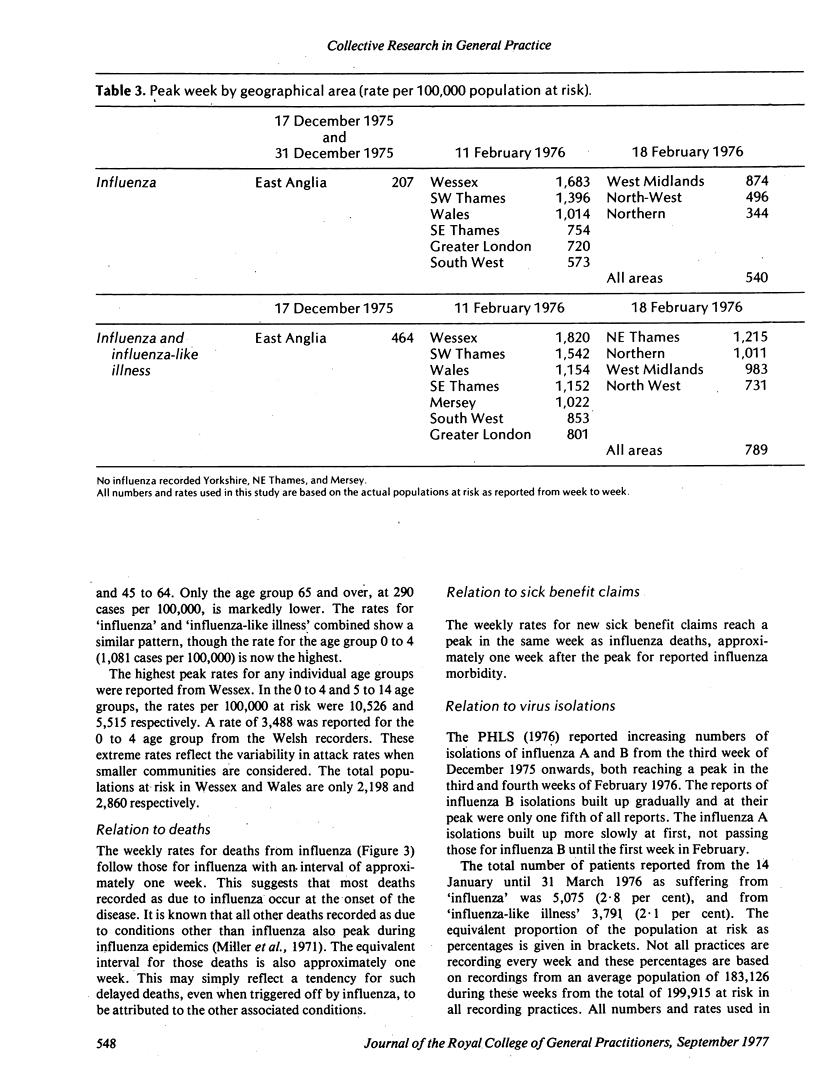
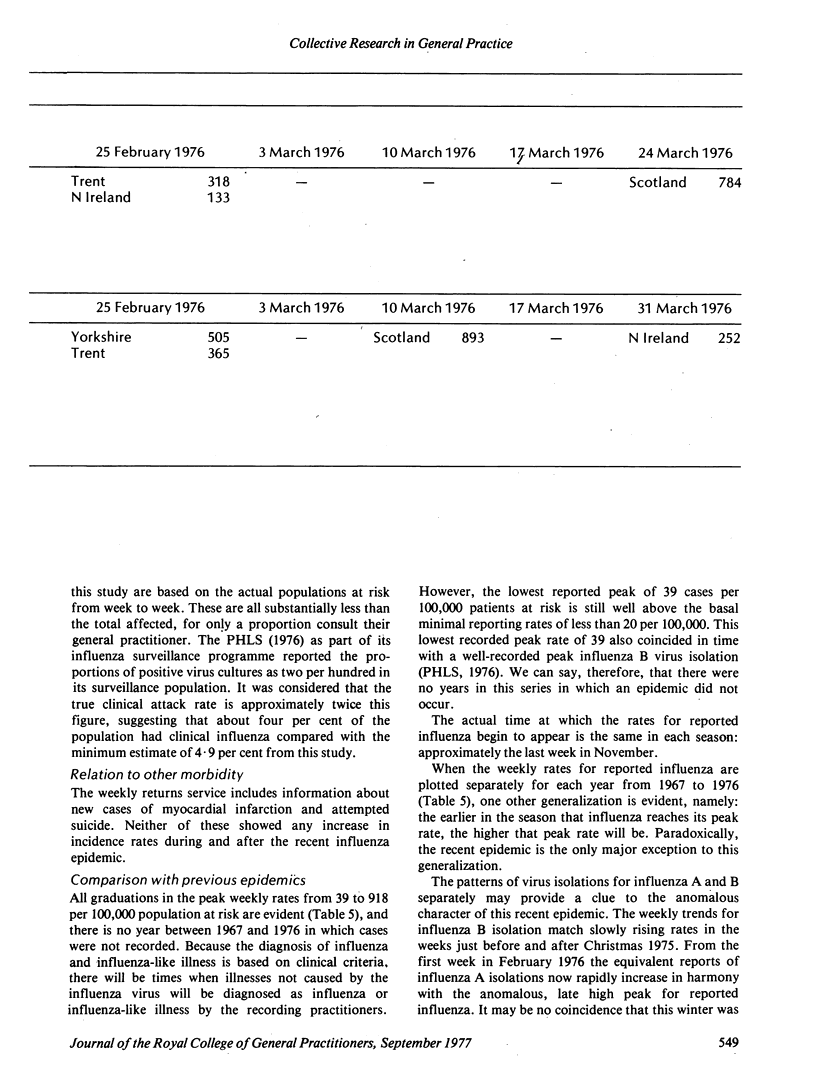

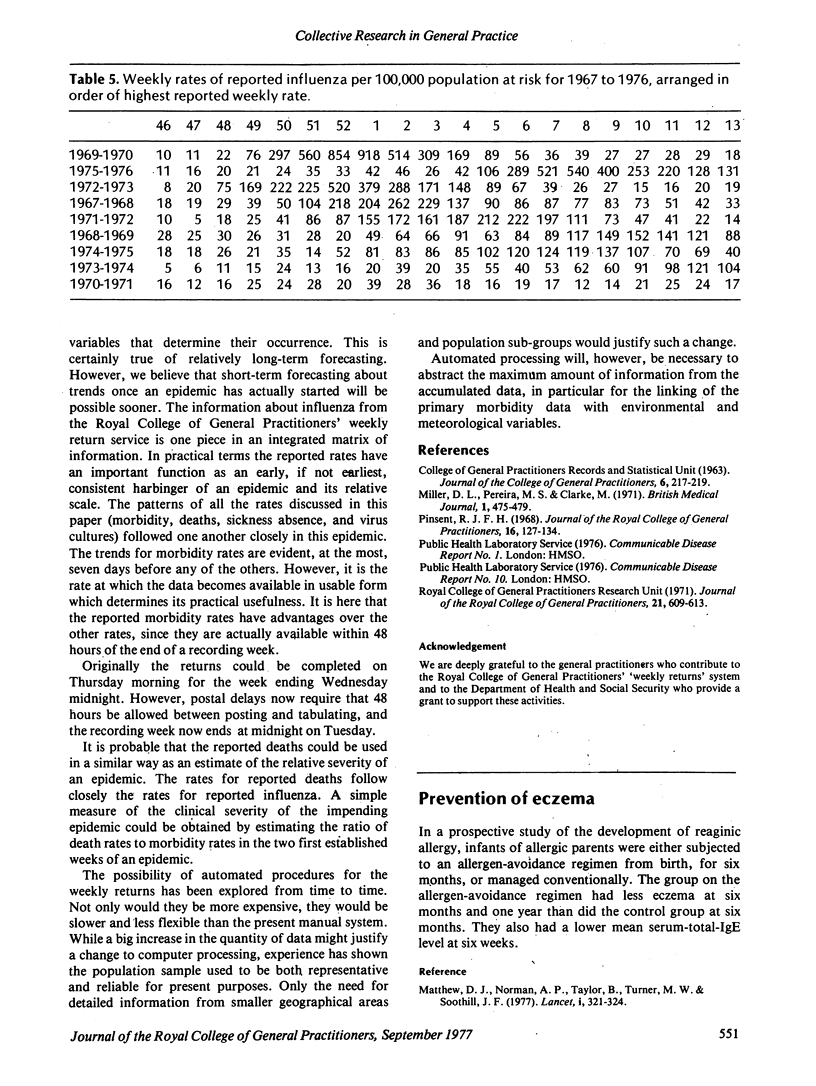
Selected References
These references are in PubMed. This may not be the complete list of references from this article.
- Matthew D. J., Taylor B., Norman A. P., Turner M. W. Prevention of eczema. Lancet. 1977 Feb 12;1(8007):321–324. doi: 10.1016/s0140-6736(77)91131-x. [DOI] [PubMed] [Google Scholar]
- Miller D. L., Pereira M. S., Clarke M. Epidemiology of the Hong Kong-68 variant of influenza A2 in Britain. Br Med J. 1971 Feb 27;1(5747):475–479. doi: 10.1136/bmj.1.5747.475. [DOI] [PMC free article] [PubMed] [Google Scholar]
- Pinsent R. J. The evolving age-sex register. J R Coll Gen Pract. 1968 Aug;16(2):127–134. [PMC free article] [PubMed] [Google Scholar]


